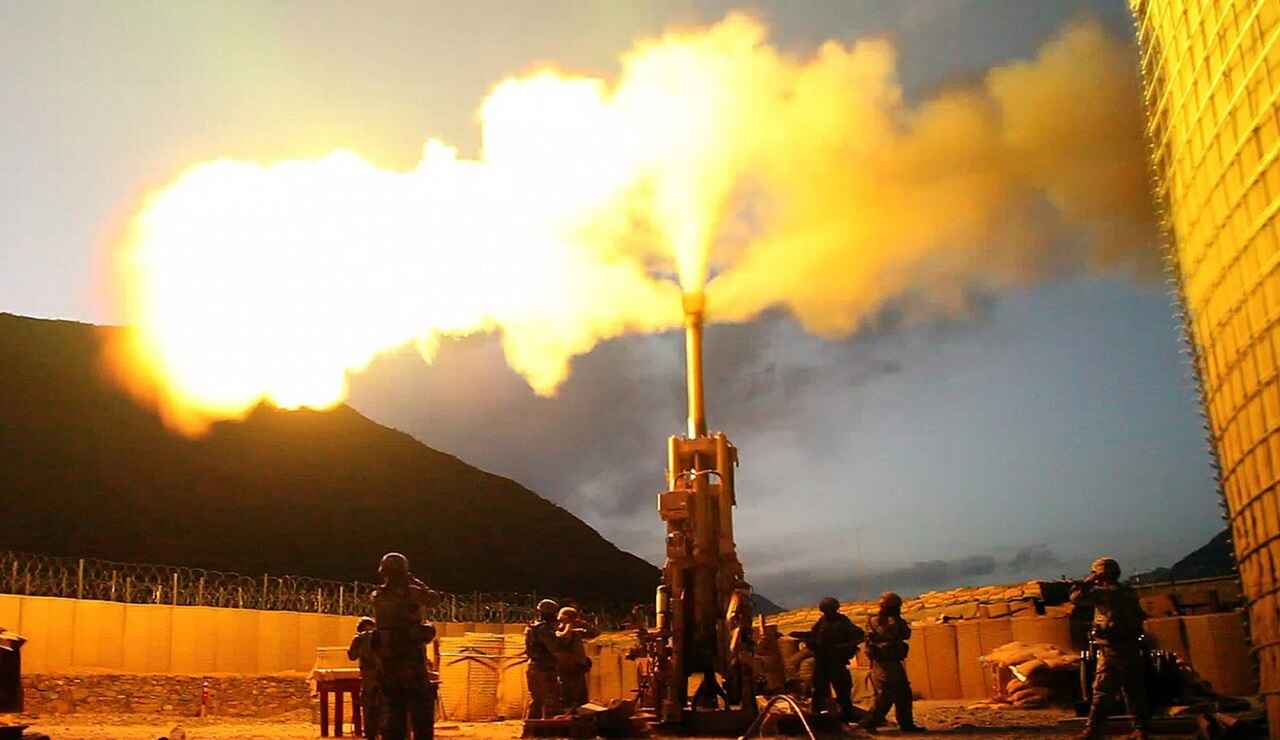
Ukraine Is Running Out of Artillery Barrels—And America Can’t Help
The sole U.S.-government-owned and operated arsenal has been unable to meet the “unprecedented demand” of more than 30 new barrels per month.
A year ago, BAE Systems announced it would restart the production of M777 lightweight howitzer structures for the U.S. Army. Since then, the defense contractor has been working with supply chains in the UK and U.S. to produce the titanium structures, which form the basis of the gun. The first of those structures is now on track to be delivered in the coming months.
However, it is just one component that can’t arrive soon enough. Ukraine’s military, which has depended on the M777 155mm howitzer, has once again been burning through the barrels due to constant firing as Kyiv’s forces remain engaged in artillery duels with the Russian military. And as TheWarZone reported this week, the sole U.S.-government-owned and operated arsenal has been unable to meet the “unprecedented demand” of more than 30 new barrels per month.
“The barrels do wear out, and degradation of the rifling and overall internal structure can lead to reduced range and accuracy, as well as the potential for catastrophic failure. Firing a high volume of rounds, especially with full propellant charges to get maximum range, in a relatively short amount of time can only increase the wear rate,” TheWarZone explained, citing its own 2019 story on how the U.S. Marine Corps also “burned out” two of the M777 barrels during the Raqqa offensive against the Islamic State (ISIS) in 2017.
This isn’t the first time Ukraine has seen its guns literally worn out from the endless barrages. According to data from the open-source intelligence analysts at Oryx, around a third of Ukraine’s M777s have been destroyed or seriously damaged.
Over a Barrel
The U.S. military is now seeking to establish a second factory to produce the M777 barrels for its needs and then possibly for Ukraine.
In addition, the UK announced in December that it will produce the howitzers at a planned 94,000-square-foot state-of-the-art facility in Sheffield. As previously reported, it will allow the British military to sustain and revitalize its artillery capabilities, and to provide new guns for the U.S. military. Yet, that facility will need to be built first, so the barrels won’t be rolling off any future assembly line until at least sometime next year.
About the “Triple 7”
Known as the “Triple 7,” the M777 is noted for packing a 16,000-pound gun into a small package that is more mobile than other artillery pieces. It is currently used by the ground forces of Australia, Canada, Colombia, India, Saudi Arabia, Ukraine, and the United States.
Christian D. Orr explained for The National Interest in December 2024: “The M777 was designed by the now-defunct Vickers Shipbuilding and Engineering between 1987 and 2003 and officially debuted in 2005,” during the then-ongoing Global War on Terror.
Orr noted it was first employed in combat with the “Royal Canadian Horse Artillery, in support of Operation Archer—the Canadian Forces contribution to Operation Enduring Freedom in Afghanistan—in operations around Kandahar in early 2006.”
But the gun had its real baptism of fire in Iraq, when the U.S. Marine Corps depended on it while fighting ISIS in Mosul. Altogether, the Marines fired more than 2,000 rounds from the gun in 486 separate fire missions. And over five months at Raqqa, Syria, the Marine artillery battalion fired more rounds than any other artillery unit since the Vietnam War—around 35,000 artillery rounds in total.
Given its capabilities, it is easy to see why the M777 remains the king of the modern battlefield, with more than 1,250 M777s in service with ground forces around the world.
The M777A1 and M777A2 are noted for employing a digital fire-control system similar to that found on self-propelled howitzers such as the M109A6 Paladin to provide navigation, pointing, and self-location, allowing it to be put into action quickly. The minimum gun crew required is five, compared to a previous nine, while the normal crew is eight. However, with a minimal emergency crew, the rate of fire is decreased accordingly.
Millions of Rounds Fired
But the massive number of rounds that the USMC fired during its time in Syria has quickly been dwarfed by the ongoing slug match in Ukraine. On the second anniversary of the fighting last February, Defense One reported that Ukraine was firing as many as 6,000 rounds per day—and according to a newly released fact sheet on Ukraine’s defense needs from the Pentagon, Kyiv would need to see 155mm projectile product increased from 14,400 per month to 40,000 per month to meet ongoing demand.
But the main bottleneck is still those barrels—and unless production can be increased, Ukraine’s forces will be the ones over a barrel!
About the Author: Peter Suciu
Peter Suciu is a Michigan-based writer. He has contributed to more than four dozen magazines, newspapers, and websites with over 3,200 published pieces over a twenty-year career in journalism. He regularly writes about military hardware, firearms history, cybersecurity, politics, and international affairs. Peter is also a Contributing Writer for Forbes and Clearance Jobs. You can follow him on Twitter: @PeterSuciu. You can email the author: [email protected].
Image: Wikimedia Commons.